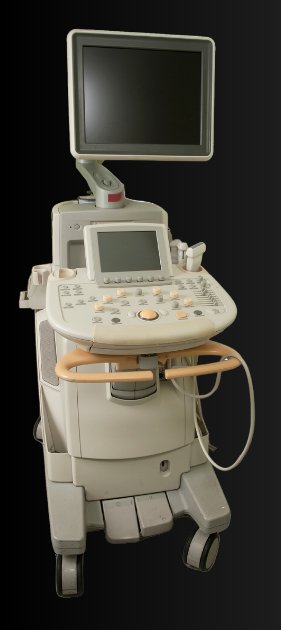Scroll the gallery for the top 20 tips of things you should know for your sonography externship.
Have more tips? Add yours below!
20 | Learn the Machine
During your free time, it’s a good idea to sit with the machine and become comfortable with its buttons.
- Download the manual to learn more about its features.
- Ask for protocol lists or write down the protocols that are already programmed into the machine.
Doing a little homework will make it much easier to manage the machine and incorporate it into your muscle memory faster.
19 | Stay Out of the Drama
It’s common for department politics to arise, and there are various reasons to complain about, from working hours to pay and gossip. Although you may agree with them, voicing your opinion might be risky as it could reach the wrong person and create a negative impression. Therefore, it’s better to focus on staying positive and busy instead of getting involved in drama.
18 | Review Your Cases
If possible, try to review the report of a radiologist or cardiologist for the patient’s care you were involved in. Pay attention to their choice of words and manner of speaking during dictation. This will enable you to use the same vocabulary and speak like a professional when describing illnesses. The best part, however, is confirming whether you made the correct diagnosis. You’ll see all that studying start to pay off!
17 | Avoid Comparing Experiences
It’s important to understand that every clinical site is unique, and even the sonographers at each site may do things differently from one another. As a student, you have the opportunity to learn something new every day, regardless of what you learned in school or even from another technologist. It’s important to use your experiences to grow and develop your skills so you can become the type of sonographer you aspire to be. Keep in mind that your peers are not at your clinical site, so make the most of your experience and make it your own.
16 | Be On Time
If your work hours start at 8 am, it is important to be ready to work at that time, not just arriving with your coat still on. To ensure punctuality, try doing a couple of practice runs before your first day to estimate the time you need for commuting, parking, and walking in. It would also be helpful to write down bus routes or sign up for a car ride service just in case your normal transportation fails. Additionally, be sure to return from breaks on time and stay until the end of your shift.
15 | Be Kind to Yourself
You are bound to make mistakes, but rest assured that you are in a safe environment where you can learn from them. Avoid getting caught up in self-doubt and instead, remind yourself of how far you have come. Sonography is a challenging field, so be kind to yourself and give yourself some grace. Don’t hesitate to get back out there and keep learning.
14 | Be Confident
Just take the picture. Study your material and know your anatomy. Be confident in what you know, and recognize when you need to seek help. It’s better to get assistance now because it won’t be available at 3 AM during your first night of solo call.
Just. Take. The. Picture.
13 | Be Helpful
We know that your externship is unpaid and you most likely have school or work-related commitments. But your hours at your site are so important. Make the most of your time there by helping out around the department. You could answer phone calls, transport people, or assist in putting away supplies. When in doubt, ask what needs to be done.
12 | Study During Downtime
Remember to bring books and flashcards with you to use during your downtime. Avoid using electronic study materials if possible, as it may appear as if you are simply scrolling through your phone or browsing the internet. If there were any questions that you came across during the day, now is a great time to look up the answers. This will show your preceptors that you know how to find and utilize various resources.
11 | Observe the Whole Job
How does a sonographer prepare and clean their room? What is their interaction like with patients, staff, and doctors? How do they manage difficult situations? Working with multiple sonographers can help you learn different techniques to perfect these soft skills.
10 | Limit Cellphone Use
It’s worth noting that while other sonographers may have their phones out, as a student, it’s best to avoid being distracted by your phone. Additionally, there may be rules against using phones in work areas, so it’s best to leave it in your locker until break time, if possible. Communicate with your clinical instructor if you need to have your phone nearby.
09 | Accept Constructive Criticism
Receiving negative feedback can be difficult, but it’s an important part of the learning process. If you want to improve your performance, it’s important to ask for feedback or a formal critique from your clinical instructor. This will help you identify areas for growth and make the process easier for both of you. It’s also important to show that you’ve listened to the feedback and are willing to make changes to improve.
08 | Room the Patient
To become a part of the patient care process, one of the first things you can do is to escort the patient to the room. You will be responsible for bringing them back from the waiting room, preparing them for the examination, and introducing yourself as the intern. This is an excellent opportunity for you to explain your role to the patient. It is also valuable to practice taking patient history and learning how to communicate effectively with patients.
07 | Be Thankful, But Advocate
It is common for sonography departments to decline having students due to already having a busy schedule, and not receiving any financial benefits. So, it is important to appreciate the opportunity and guidance offered by instructors at your site. At the same time, as a student, it is important to voice your needs. Not all sonographers know how to teach or know what you need. Communication is your best friend.
06 | Ask Questions
At the beginning of your work, you might have a lot of questions. It’s important that you feel comfortable asking questions, but also know when it’s appropriate to do so. Avoid asking questions in front of a patient and save them for when you’re reviewing images or in the tech work area. Once you receive the answer, remember it so that you don’t have to ask the same question again. Asking questions that start with “can you clarify” or “I don’t understand” are better received.
05 | Stay Curious
Congratulations on making it to your clinicals! In the field of sonography, there is always something new to learn, even for the most experienced techs. It’s important to remember that you don’t know everything and always to be willing to learn and improve your knowledge and skills. So stay curious and open-minded, and embrace new opportunities to expand your expertise.
03 | Turn Over the Room
After each patient, it is necessary to wipe down the machine and bed, change the linens, and replace the bottles. Taking care of these tasks without being asked is a great way to show gratitude and appreciation for the job. Removing laundry, restocking linens and supplies will earn you major brownie points at the beginning of your internship!
02 | Show Initiative
Your internship is essentially an extended job interview. It’s important to demonstrate to the sonographers that you have a genuine desire to learn and grow in the field. Even if they don’t have any job openings, you should still strive to become an independent sonographer. This means being willing to volunteer for exams, planning ahead for the schedule, taking constructive criticism, and fully committing to your education and their work culture. It’s important to keep in mind that the sonography field is relatively small, so it’s crucial to maintain a flawless reputation.
01 | Scan, Scan, Scan!
As a sonography intern, the most important thing you can do is to gain as much experience as possible in using the transducer. Whenever an opportunity arises, say “yes”. It’s only through practical application that you’ll acquire the technical skills needed to operate an ultrasound machine and capture accurate diagnostic images. Don’t shy away from challenging exams, embrace them as a chance to grow and learn. You have what it takes to succeed!






0 Comments